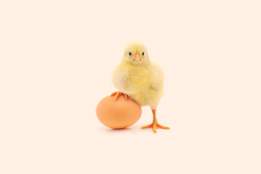
Introduction
The Los Angeles County Museum of Art (LACMA) challenged us to define some of their favorite artworks.
That was fun for a while, but then it was our turn: we challenged LACMA to illustrate some of our favorite words.
We're going to keep this going for the rest of the week. Check back daily for new words and pictures as they're added!
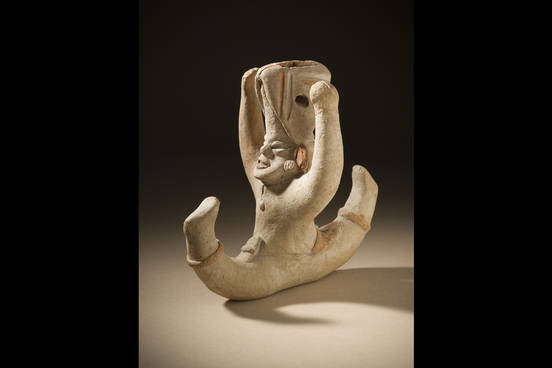
Kinker
A kinker is “an acrobat or other performer in a circus.” The evidence for this word is mostly from the first half of the 20th century in American English, and context gives us a few clues about how the word was used: it seems to have referred to any performer except clowns (who were sometimes called Joeys), and especially performers who had no featured act of their own.
In his novel about circus life during this period, Thomas Duncan gives the word a clear explanation in the context of show business more generally:
In vaudeville acrobats were pariahs who were assigned the shabbiest dressing rooms, who were just tolerated by the gag men and ignored by the top liners. It was very different in the circus. They called you a kinker in the circus but they respected you as an aristocrat.
—Thomas W. Duncan, Gus the Great, 1947
Although the origin of kinker is obscure, it seems to derive from kink, which came to English from the Dutch word meaning “twist” or “twirl.”
To learn more about this artwork, click here.

Flabellate
Flabellate means “resembling a fan in shape” and can be pronounced \FLAB-uh-lit\ or \FLAB-uh-late\.
It comes from the Latin word for “fan,” flabellum, and is usually used in botany or zoology to describe the shape of a part of a plant or animal—long the province of fancy Latinate words rather than plain English ones—such as “flabellate antennae.” (Think of spatulate and trifoliate and palmate that similarly describe shapes found in nature.)
Flabelli- is the related Latin root that has been used to form words like flabelliform, flabellinerved, and flabellifoliate, terms used by scientists; Charles Darwin described “flabelliform” branches of plants, for example.
Another related word, flabellum, means both “a ceremonial fan” such as the large ostrich feather fan sometimes carried before the Pope on special occasions and the fanlike shape of certain insect body parts.
To learn more about this artwork, click here.
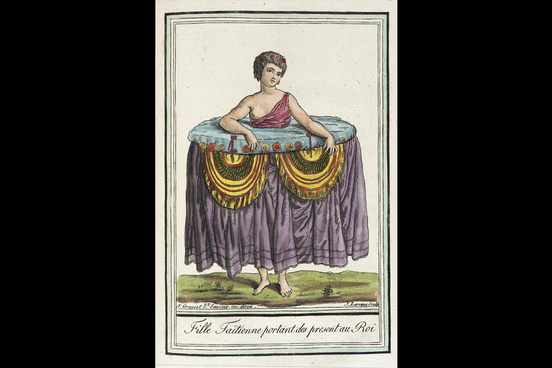
Impedimenta
Impedimenta is a word borrowed directly from Latin that means “things that impede” and is a synonym of appurtenances (“accessory objects”). In English, “things that impede” is interpreted literally to mean baggage, equipment, or supplies. The word was also used as a synonym for one specific legal meaning of the more common word impediment, “a bar or hindrance (as lack of sufficient age) to a lawful marriage.”
This word connects in two playful ways with LACMA’s engraving: first, the woman’s garment plainly was not designed for ease of movement, and second, her bare feet remind us of the ultimate Latin root of impedimenta, which comes from impedire meaning “to shackle the feet” or “to entangle the feet” and ultimately from ped- meaning “foot.”
To learn more about this artwork, click here.
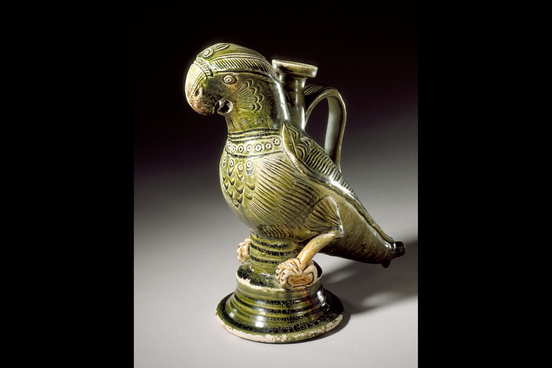
Psittaceous
Psittaceous is the odd-looking word that means “parrotlike.” It is pronounced \suh-TAY-shus\ and comes from the Latin word for “parrot” that originally came from Greek (hence the telltale silent p). It’s only one of a group of words with similar origins, including Psittacidae (\suh-TASS-uh-dee\), the scientific classification of the birds, psittacine (pronounced \SIT-uh-syne\), “of or relating to the parrots,” and psittacism, “automatic speech without thought of the meaning of the words spoken.”
To learn more about this artwork, click here.
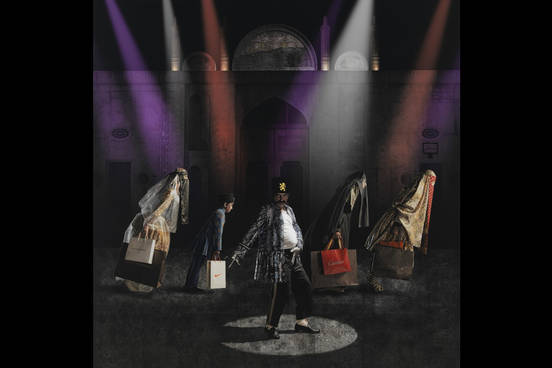
Commodify
Commodify is a very new word in English, and the definition makes an explicit reference to art: “to turn (as an intrinsic value or a work of art) into a commodity.”
It comes from making a verb from the noun commodity, a word with a much longer history. Commodity began as an abstract word meaning “convenience” or “usefulness”—which connects it with its Latin root commodus (“convenience,” “suitable”)—and developed to mean “something that is bought and sold” (“agricultural commodities”) or “something or someone that is useful or valued” (“patience is a rare commodity”).
To learn more about this artwork, click here.
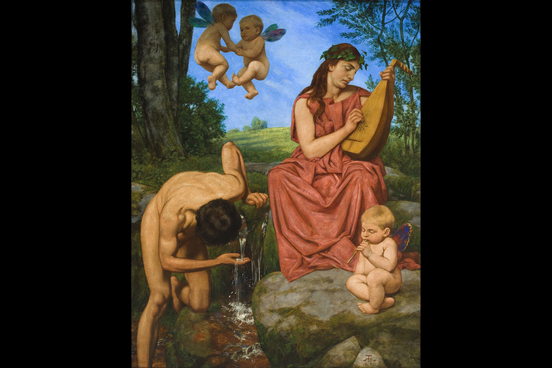
Idyll
Idyll can mean “a happy or enjoyable scene or experience” or “a simple poem or other piece of writing that describes peaceful country life.” It comes from the Greek word eidos meaning “form” or “shape,” which is related to the Greek verb that means “to see.” Idyll can also mean “a romantic interlude.”
Other closely related literary terms are pastoral, a work that deals with the innocence and serenity of the rural life of shepherds, and eclogue, a poem in which shepherds converse.
Idyll is usually pronounced just like idol, but in British English is often pronounced \IH-dill.
To learn more about this artwork, click here.

Ursine
Ursine means "of or relating to a bear or the bear family (Ursidae)" or "suggesting or characteristic of a bear." It comes from the Latin ursinus, which in turn comes from the Latin word for bear, ursus. One way to remember the word's meaning is to think of Ursa Major, the constellation also known as the Great Bear; that group of stars got their name from their ursine appearance.
To learn more about this artwork, click here.
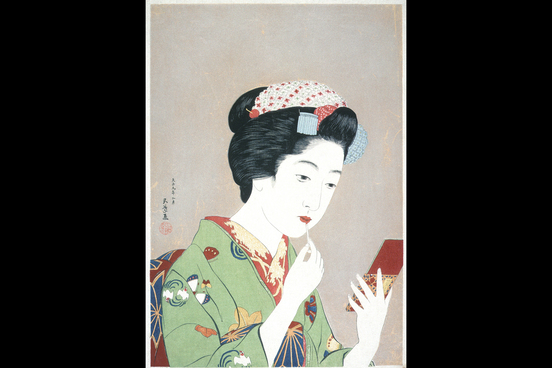
Fard
Though a relatively uncommon little word, fard is used to describe a very familiar activity-the application of cosmetics. When it is encountered these days it is often in participle form or simply as an example of an unusual or old-timey word. Fard was borrowed from Anglo-French (from the verb farder) and first appeared in English in the mid-1400s. It is ultimately of Germanic origin and akin to the Old High German word faro, meaning "colored."
In the past, fard was used with the meaning "to gloss over."
To learn more about this artwork, click here.

Gove
Gove (which we only enter in our Unabridged dictionary) is similar in meaning to gape, except that the latter word has a greater range of meanings. It should be pointed out that even when gape is being used to mean “to stare at” it typically carries the additional meaning of “with the mouth open,” and sometimes you need a word to describe staring idly at something with a closed mouth. That word is gove.
Gove comes from a word in the Scots dialect of Middle English, goven. It is in no way connected to the name of the editor in chief of Merriam-Webster’s Third New International Dictionary, Philip Babcock Gove, a man who never stared idly at anything in his life. The word for a person who stares idly at things is gongoozler.
To learn more about this artwork, click here.

Agelast
Agelast means "a person who never laughs." It comes from the Greek word agélastos (“not laughing”), although it came to English from the Middle French agelaste (found in the writing of Rabelais). One of the pleasing aspects of English is that, because it has taken its vocabulary from such a wide array of languages we have an embarrassment of riches in the field of "words which are descended from laugh in another language.’"
The Latin word for “to laugh,” ridēre, serves as the root for subrident (“offered with a smile”), riant (“pleasingly mirthful”), arride (“to smile or laugh at”), and ridiculous (“extremely silly or unreasonable”). The same Greek word that serves as the root of agelast (gelan, “to laugh”) gave us gelastic (“risible”). What about our own word laugh? That comes from the Old English hliehhan, which is, when you try to pronounce it, kind of laughable in its own right.
To learn more about this artwork, click here.
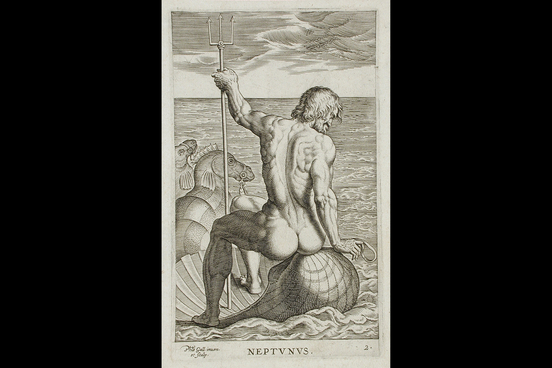
Natiform
Natiform has been the go-to word for describing things that look like buttocks since 1681, when Thomas Willis included it in his Five Treatises, in the section titled “A table of all the hard words derived from the Greek and Latin.” Natiform is a bit of a hard word, and it does indeed come from one of these two languages, combining the Latin word natis (“buttocks”) with the English suffix -form (which also comes from Latin). If you are in need of a word for “shaped like X,” the English language has you covered.
Resembling a pear? Pyriform. Resembling a goose? Anserine. Resembling a vain conceited foolish usually male person that is falsely proud of his achievements and foppish or finical about his dress? Coxcombical. You get the picture.
To learn more about this artwork, click here.
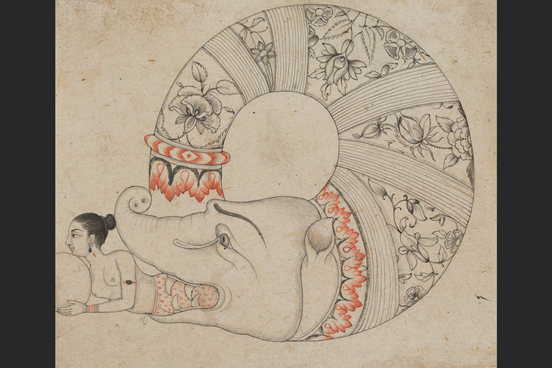
Liminal
Liminal means "of, relating to, or being an intermediate state, phase, or condition." It is a fairly recent addition to our language, with our earliest evidence for the word coming in 1875. The word comes from the Latin word for “threshold,” limen. This Latin root has served as the basis for a number of other items in our vocabulary, including eliminate (“to cast out”), sublime (“lofty in conception or expression”), preliminary (“introductory”), and the ever-popular postliminary (“subsequent”).
To learn more about this artwork, click here.

Ennui
Ennui means "a feeling of weariness and dissatisfaction." If you find the condition of ennui (or simply those who suffer from it) to be annoying, your feelings make a good deal of sense, at least in an etymological manner. Ennui and annoy both can be traced back to the Latin word inodiare (“to make loathsome”). While ennui is typically listed as a synonym for boredom, this word (borrowed in the early 18th century from French) carries with it an additional sense of being uninspired and weary.
To learn more about this artwork, click here.
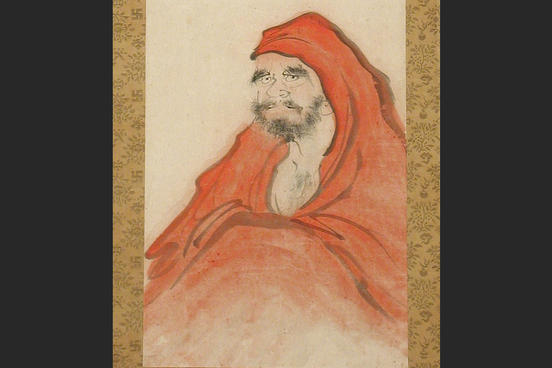
Weltschmerz
A piece of information that will surprise absolutely no one is that we borrowed weltschmerz from German, which seems to be the language we turn to when we find that we lack some complex word for an even more complex concept. In addition to this word for "sadness with the state of the world," German has been kind enough to lend us many other surprisingly specific and useful terms. Zugzwang (“the necessity of moving in chess when it is to one's disadvantage”), zeitgeist (“general intellectual, moral, and cultural climate of an era”), weltanschauung (“philosophy of life”) are but a few. And schadenfreude ... everyone loves schadenfreude.
To learn more about this artwork, click here.

Ailurophile
Ailurophile means "a lover of cats." The concept of the cat-lover may be an ancient one, but our word for this kind of person is fairly recent, with our earliest written evidence coming from 1914. The word appears in a paper in The American Journal of Psychology (with the catchy title of A Synthetic Genetic Study of Fear), in which the author notes that “The presence of cats in every known land and age shows that the ailurophiles ... vastly outnumber the ailurophobes.” The word ailurophobe (“a person who hates of fears cats”) appears to be slightly older, dating to 1905.
To learn more about this artwork, click here.
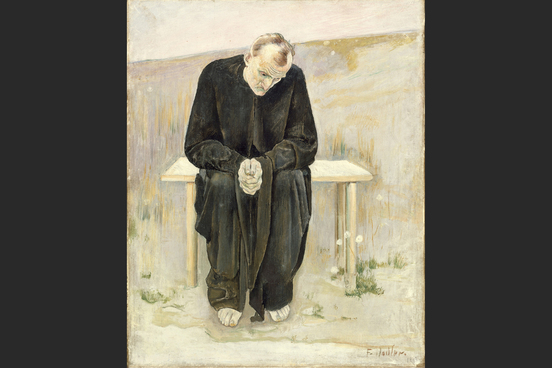
Consenescence
Consenescence ("general decay especially from old age") may feel like a bit of a depressing word, reminding us all of the inevitability of our decreasing mental faculties (not to mention the effect wrought upon our physiques) which attend growing older. So as a means of cheering you up, we will remind you that the word comes from the Latin consenescere, which has the slightly lighter meaning of “to grow old together.” If you prefer your etymologies depressing, you’re in luck, as this Latin word also has the meaning of “to become weak.”
To learn more about this artwork, click here.
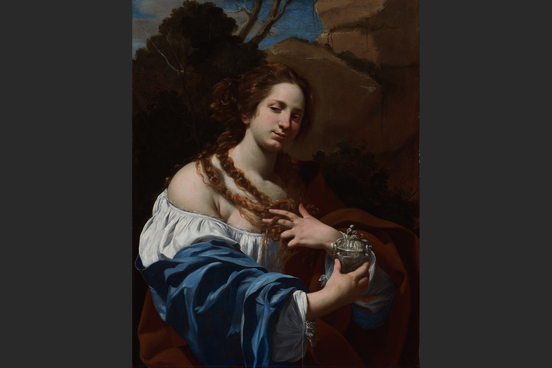
Side-eye
Side-eye ("a sidelong glance or gaze especially when expressing scorn, suspicion, disapproval, or veiled curiosity") was just added to our dictionary. However, not only is the idea of giving someone the side-eye an old one, the word itself has been around for quite a while. Our earliest example is from 1797:
Here we come to what calls for the strongest eye-sight, the most steadfast gazing. Our being in Adam has been looked on with a side eye. The subject has provoked dislike; I may almost say, contempt. It is now painful to speak of it.
— Remembrancer For Lord's Day Evenings, 19 Mar. 1797
Side-eye has been in consistent use since then. It appears in James Joyce's Ulysses, which contains the line “A side eye at my Hamlet hat.”
To learn more about this artwork, click here.





